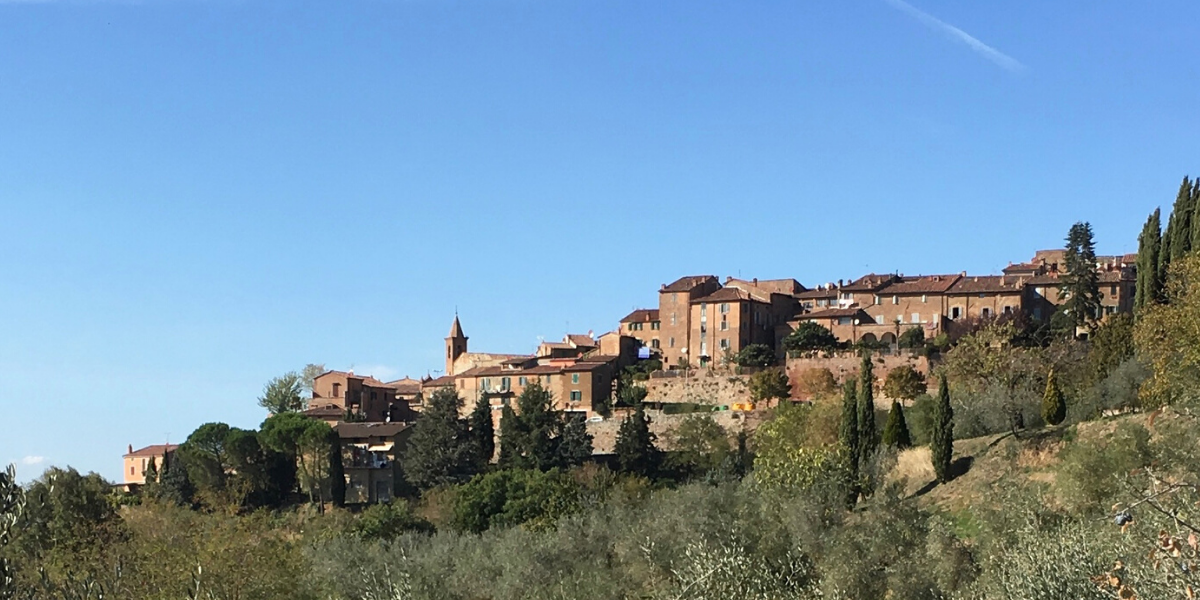
On the borders of Umbria and Tuscany, closed between Lake Trasimeno, Mount Amiata and the Orvieto area, there is a land made of gentle hills and timeless villages linked to the "Divine Painter": Pietro Vannucci known as Perugino.
We take you back in time, to the 15th century when the illustrious Della Cogna family, already related to noble families of the time such as the Baglioni, Sforza and Colonna, began to assert their hegemony in the territory by building castles, admirable fortresses and palaces.
The area of Lake Trasimeno was soon to become Marquisate and then Duchy of Della Corgna family.
Pietro Vannucci was born in the fifteenth century into one of the most famous families of Città della Pieve, sensitive to art and beauty. The young man, after an initial training by Perugina, reached Florence to attend Verrocchio's workshop together with other "young artists" of the calibre of Leonardo da Vinci, Ghirlandaio and Botticelli.
Perugino found inspiration in his original landscapes and captured their essence by representing the hills, the views of the small villages and the woods in the backgrounds of his works, visible today all over the world.
He was the first Renaissance artist to paint in the "modern way": light colours, rich in light, defined and elegant characters, invested with an angelic air.
His art is made of harmonies and balances, a style reminiscent of the Umbrian countryside, the wide perspectives of green hills, agricultural landscapes, pastures rich in light.
We discover the lands of Perugino in four steps.

Some of the most suggestive paintings of the Divine Painter can be admired walking among the medieval palaces and churches of Città della Pieve.
The Adoration of the Magi, dated 1504, occupies a wall of seven meters inside the Oratory of the Whites: the characters are elegantly inserted in a landscape ranging from Città della Pieve to Trasimeno and Val di Chiana.
Continuing the route towards the Cathedral of Ss. Gervasio and Protasio there are two works by Perugino: the Baptism of Christ and a panel depicting the Madonna in Glory among the Patron Saints.
The most important work of Perugino's old age, the Deposition of the Cross, is preserved and visible in the Church of Santa Maria dei Servi. In Piazza del Duomo there is a plaque commemorating Vannucci's birthplace.
The journey in the lands of Perugino continues to the discovery of Panicale a village that preserves intact its medieval origin. The circular castle was considered one of the most fortified in Italy until the conquest of the Florentine armies in the seventh century.
Accessing from the city gates you reach three incredibly beautiful squares and palaces, such as the 14th century Palazzo del Podestà and the beautiful 15th century Fountain, the Collegiate Church of San Michele and the Complex of San Sebastiano, built by the Jesuit Fathers. Here you can admire two important works by Perugino: the Martyrdom of St. Sebastian and the Madonna and Child among Saints.
Paciano, one of the most beautiful villages in Italy, offers a suggestive view from Lake Trasimeno to Mount Amiata. The country roads immersed in peace, surrounded by vineyards, olive groves and pastures, many times travelled by Perugino during his journeys to Tuscany, recall the landscapes so represented in his works.
The last stop linked to the Divine Painter leads you to the discovery of Fontignano, a hamlet of Perugia. In this small village the Perugino was finishing the Adoration of the Shepherds in the Church of the Santissima Annunziata when, in 1523, he was caught by the plague. Today in the small and suggestive country church is preserved the tomb of the artist. Inside you can admire what is probably his last work completes the fresco of the Madonna and Child Enthroned of Fontignano.
The unfinished Adoration of the Shepherds now belongs to the Victoria and Albert Museum in London.
Discover the lands of Perugino:
THE LAND OF THE PAINTER PERUGINO: EXPERIENCE OF ART AND TASTE
UMBRIA TOUR RIDING A VESPA
FROM LAKE TO LAKE: SPECIAL TRAVEL EXPERIENCE IN UMBRIA